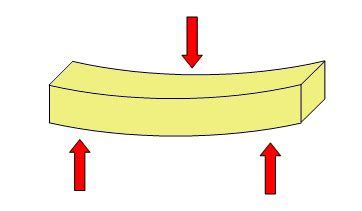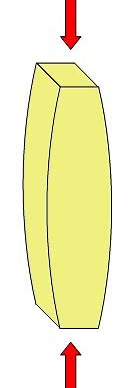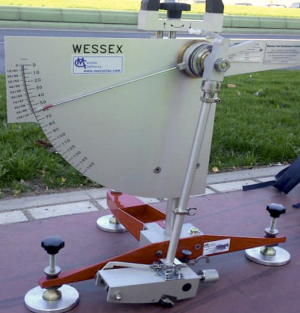Elaborated by Eva Portas Fernández
Introduction: IMPORTANCE OF KNOWING THE STONE MATERIALS
Natural stone is one of the most ancient building materials that has accompanied us since our origins. However, strangely, it remains unknown in so many ways to most of us
To know the materials and understand their technical characteristics has become indispensable for the industry since offering this information to all the interested agents will make its use easier.
The aim of this Guide is to give technical information on natural stone so as to increase the knowledge of it, the specifications, and use.
TECHNICAL CHARACTERISTICS OF STONE
When electing a material we need to know its capabilities that will adapt to the project.
One should to take into account that all the stones have possible uses, but not all the stones can be used for all the applications. To give an example: knowing what is the degree of absorption of water of a stone will help us to decide if it is valid or not for use as cladding material in a swimming pool.
How can one know what are the characteristics on which to focus for a stone for a particular use? We will now try to summarise them below.
FROM WHERE DO THE NORMS COME WHICH DEFINE THE REQUISITES OF A STONE FOR CONSTRUCTION?
The requirements for a stone will depend on the country where the stone is found or the country of its destination.
We can find requisites related to the material itself (granite, marble, limestone, etc.) with the construction products (tiles for pavements, slabs for facades, etc.) or the construction system used.
HOW DOES ONE KNOW WHAT TESTS NEED TO BE DONE TO THE MATERIALS?
It is important to know that, from one country to another, the requisites needed, as also the testing methods may vary by which one arrives at a result.
For example, the ASTM norms indicate some minimum values for the type of stone being examined, however, in the majority of the European countries there is no limit for the materials, but it is regulated as a function of the use that is made of the material.
On the other hand, if one is talking of the testing methods, these can also vary from one country to another. As an example, the method for determining the resistance to slippage of a stone is different if done in Spain (the pendulum method) to that in Germany (method of the ramp), to that in USA (method of slider).
WHAT IS THE OBLIGATORY CE MARKING IN EUROPE?
The CE marking indicates that the manufacturer of the product has assured that the harmonised norms have been met. Till now the CE marking in natural stone is obligatory for kerbstones, pavers and tiles for exterior and interior pavements, slabs for facades, tiles for cladding of floors and walls and pieces for manufacture of brickwork, i.e., ashlar walls and similar things.
The manufacturers then need to put in place Control Systems of Production, do initial testing on the products and, with certain frequency, new control tests.
The results of the tests obtained are embodied in two documents: a declaration of Capabilities and the CE marking is put on the products.
AS A PRODUCER, WHAT DOES ONE HAVE TO GIVE TO THE CLIENTS?
If one is selling within the EU, one needs to give a Declaration of Capabilities of ones products. In other countries one needs to follow the norms that can have effect but, in all cases, it is important to understand that it is always necessary to do testing frequently of the stone materials and this must be available in the form of ' technical characteristics' with at least the most important test results.
WHAT ARE THE CHARACTERISTICS CURRENTLY CONSIDERED MOST IMPORTANT?
In any techcnical data of a stone it is recommended there be information on some of the following tests: resistance to flexion, resistence to compression, water absorption, density and porosity.
There are other important tests but that would depend on the application being made of the stone, which could be tests on slippage, or wearing out in a pavement, or tests of resistance to ice in cold climates.
We now deal with the tests that represent the most important characteristics so as to understand their usefulness.
WHAT IS THE SIGNIFICANCE OF THE RESULTS OF THE MOST IMPORTANT CHARACTERISTICS?
Resistance to Flexion
Let us say that flexion is the deformation that can take place in any element in the perpendicular direction to its longitud axis. This type of stress is undergone by tiles or slabs on the facades.

The test is done with a press that keeps increasing the load on the material till its breakage.
Knowing the value of resistance to flexion is fundamental. A number for resistance of a stone by itself does not indicate that the material is 'better or worse' for a particular application, but one needs to adequately calculate the dimensions.
In natural stone, the values of resistance to flexion can vary very much from one material to another. For example, some limestones or sandstones can give values from 2 to 3 Megapascals (MPa) and, on the other hand, slates can give values that can go up to as much as 60 MPa, or more.
The following table portrays orientative values of resistance to flexion for different types of stones:
|
RESISTANCE TO FLEXION (MPa) |
QUARTZITES |
GRANITES |
MARBLES |
LIMESTONES |
SANDSTONES |
|
LOW |
<6 - 9 |
<5 - 8 |
<4 - 7 |
<3 |
<3 |
|
MEDIUM |
9 - 20 |
8 - 16 |
7 - 15 |
3 - 6 |
3 - 6 |
|
HIGH |
>20 |
16 - >20 |
15 - >20 |
6 - >8 |
6 - >8 |
Resistance to compression
The compression load represents the flattening load, for this the testing is important for stone products that are installed in a big way such as cobblestones or ashlars for walls. The testing is done with a press subjected to loads that flatten it.

As orientation, the following table portrays the values of resistance to compression for different types of stones.
|
RESISTANCE TO COMPRESSION (MPa) |
QUARTZITES |
GRANITES |
MARBLES |
LIMESTONES |
SANDSTONES |
|
LOW |
<70 |
<80 |
<50 |
<30 |
<30 |
|
MEDIUM |
70-150 |
80-150 |
50-120 |
30-100 |
30-80 |
|
HIGH |
>150 |
>150 |
>120 |
>100 |
>80 |
Water absortion
The capacity of water absorption of a stone is specially important for some applications.
The values of atmospheric water absorption of natural stone can range from almost zero, close to 0% in some marbles and granites, to values of 10% or more for not very dense limestones. The table below shows some common and orientative values
|
WATER ABSORTION (%) |
QUARTZITES |
GRANITES |
MARBLES |
LIMESTONES |
SANDSTONES |
|
LOW |
<1 |
<0,3 |
<0,1 |
<2 |
<3 |
|
MEDIUM |
1-3 |
0,3-1 |
0,1-0,8 |
2-7 |
3-10 |
|
HIGH |
>3 |
>1 |
>0,8 |
>7 |
>10 |
There are also products that can seal the pores of the stones. These are chemical and water repellant products aimed at waterproofing.
Density
The density of stone is measured in kgs per cubic metre of material. Greater the density, less is the percentage of porosity and greater the strength and, normally, less capacity of absorption.
Within each variety of rock there can be more or less dense stones, even so one can provide, as an example, the following table of values:
|
DENSITY (kg/cm3) |
QUARTZITES |
GRANITES |
MARBLES |
LIMESTONES |
SANDSTONES |
|
LOW |
<2500 |
<2500 |
<2500 |
<1700 |
<1900 |
|
MEDIUM |
2500-2800 |
2500-2800 |
2500-2800 |
1700-2200 |
1900-2500 |
|
HIGH |
>2800 |
>2800 |
>2800 |
>2200 |
>2500 |
Porosity
The porosity is closely linked to density: more the pores, less dense is the material, i.e., less weight per unit volume.
The porosity is given in percentage, and can vary a lot from one material to another, from less than 1% till much higher values for very porous stones such as limestones, travertines and similar.
|
OPEN POROSITY (%) |
QUARTZITES |
GRANITES |
MARBLES |
LIMESTONES |
SANDSTONES |
|
LOW |
<0,4 |
<0,4 |
<0,3 |
<1 |
<1 |
|
MEDIUM |
0,4-1,3 |
0,4-1,3 |
0,3-1,3 |
1-5 |
1-15 |
|
HIGH |
>1,3 |
>1,3 |
>1,3 |
>5 |
>15 |
Resistance to wearing out
Wearing out has to do with the traffic over the surface of a tile or pavement.
There are several ways of measuring the wearing out. The American method gives a result in the form of an index ((Iw), other methods provide a result in milimetres.
It is an important characteristic to determine when dealing, for example, with pavements with very high traffic such as shopping centres, train stations, airports, etc.
Resistance to slippage
It is the capacity of a stone to resist the slippage of a person due to the surface. There are several ways of measuring though the most commonly used is the pendulum of friction, of which one can see the image below:

The great advantage of this method is one can do testing at site, i.e., out of the laboratory. Other methods, such as the German, that of the ramp, or that used in USA, BOT 3000, also result useful to determine this characteristic.
Depending on the country of destination one can observe the requirements. In a general way, in Europe, the values of slippage greater than 35 are considered safe against slipping. If, on the contrary, one measures with the German method, one will determine the type of slipperiness( from R9 to R13). In USA, on the contrary, one measures the coefficient of dynamic friction, with results between 0 and 1.
Name of the Stone
When one talks of the name of the stone one refers to the commercial denomination and its petrographic denomination.
The commercial denomination is the one that is adopted by the manufacturer and supplier. It is common that a stone from the same exploitation be given different names when processed and commercialised by different companies.
The petrographic denomination of a rock is that one which is determined after a petrographic study with the microscope
To give an example of this, a granite, commercially denominated ROSA PORRIÑO, referring to its characteristic colour, is, petrographically, a biotitic granite. These two names ought to be clearly identified in a data sheet, same as the origin of the material (location of the quarry).
Other characteristics related to the peculiarities of the project:
Each project has its conditions and distinct peculiarities. For example, in external areas where there is risk of frequent snowfall, it is important to to be clear of the resistance of a stone to the cycles of frosting and defrosting. When there is a strong exposure to high temperatures or to important thermal shocks one must determine the changes that take place in the material and, if relevant, the coefficients of thermal expansion of the stone. If the area where the stone is used is close to the sea or to a salty environment, it will also be necessary to judge these aspects.
The table below indicates, as an orientation, the different coefficients of thermal expansion of some natural stones.
|
TYPE OF STONE |
COEFFICIENT OF THERMAL EXPANSION |
|
QUARTZITES |
3 x 10-6 to 7 x 10-6 |
|
GRANITES |
5 x 10-6 to 9 x 10-6 |
|
MARBLES |
3 x 10-6 to 6 x 10-6 |
|
LIMESTONES |
3 x 10-6 to 7 x 10-6 |
|
SANDSTONES |
2 x 10-6 to 7 x 10-6 |
REQUIREMENTS OF THE STONE FOR EACH APPLICATION
This part explores some ideas of the most important characteristics when observed as a function of the application of the stone.
WHAT ARE THE REQUIREMENTS IN A STONE FOR PAVEMENTS?
If one is going to choose a stone for pavements one should take into account the following characteristics:
Resistence to flexion. This data will be used for calculating the thickness.
Currently whenever big size and slender formats are installed it becomes especially relevant to calculate the adequate thickness of the tile.
That a stone has a higher resistence to flexion, or lower, does not mean it is a worse material but that, under the same conditions, the one with greater thickness will be installed.
When dealing with cobblestones the resistance to compression will be the most important characteristic.
Absorption of water and porosity. Depending on the degree of humidity in the environment one may need to limit the requisites, it is more important if one is talking of exterior pavings or whether it is in frequent contact with water.
The American norms ASTM establish recommendations for water absorption at atmospheric pressure depending on the type of stone, for example 0.4% for granite and 0.2% for marble.
Resistance to sliding. Limiting the possible slippage of the pavement users is extremely important to guarantee the safety in usage, above all in exterior or interior pavements where there is a risk of liquids spilling over. One needs to fulfill the requisites established in the destination country.
Resistance to wearing. The wearing out that is produced over time due to passage on the pavement surface is not a trivial matter. In some countries limits to resistance to wearing is recommended as a function of usage of the pavement with more or less intensity of traffic.
FOR FACADES WHAT REQUISITES SHOULD A STONE HAVE?
When it comes to facades one needs to take into account, generally speaking, the following characteristics:
Resistance to flexion. For the same reason as in the case of pavements one needs to know the resistance to flexion to give an adequate dimension to the pieces which will comprise the facade.
Water absorption. In socles of the facades (lower parts) which are in constant contact with water( of the sidewalks and terraces) one needs to control the water absorption due to capillarity.
Resistance to anchors. It is convenient that for any stone that is going to be installed with anchors in the edges or in the back side testing be done to know the resistance to these types of anchors.
OTHER APPLICATIONS: COUNTERTOPS
The countertop is usually a star product of the aesthetically spectacular stones. It is important that the stones that are destined for countertops have:
-With very little or no porosity, close to 0 %, therefore occasionally products are applied to improve this characteristic.
- They are not easily stained: there is a test for this that determines the sensibility to accidental staining of the stone, which can be done with distinct agents of stains in a particular moment, for example, coffee, oils, wine, etc.
- That the thermal shocks do not affect them. Those produced by supporting a very hot plate on its surface.
- That it be resistant to scratching of the possible sharp tools used in the kitchen.
About the autor: Mrs. Eva Portas Fernández is a technical architect and has developed her professional career for more than 15 years in the natural stone industry. She has been Director of Quality in the testing laboratory of the Technological Centre of Granite in Porriño (Spain). Since 2018 she has been an independent consultan (STEINN)t, working on projects of special relevance and with different public sector and private institutions.
Acknowledegements: Thanks to Mr Reiner Krug of the German Stone Association (DNV) for his inputs.
